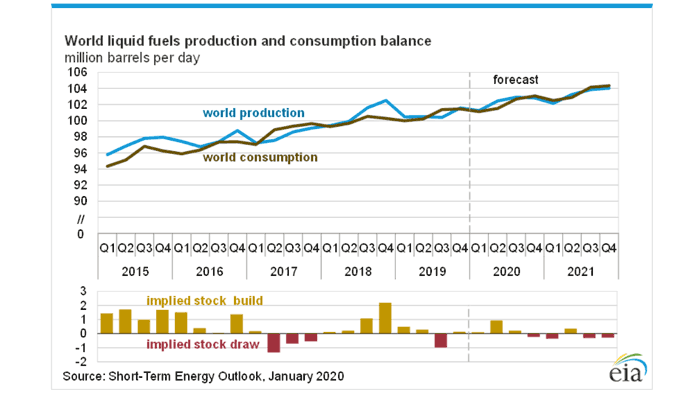
EIA predicts 3% rise in U.S. refinery runs due to IMO 2020
In January 2020, the International Maritime Organization (IMO) enacted Annex VI of the International Convention for the Prevention of Pollution from Ships (MARPOL Convention), which lowers the maximum sulfur content of marine fuel oil used in ocean-going vessels from 3.5% of weight to 0.5%.
The U.S. Energy Information Administration (EIA) expects this regulation will encourage global refiners to increase refinery runs and maximize upgrading of high-sulfur heavy fuel oil into low-sulfur distillate fuel to create compliant bunker fuels.
In its latest edition of the Short-Term Energy Outlook, the EIA forecasts that U.S. refinery runs will rise by 3% from 2019 to a record level of 17.5 million barrels per day (bpd) in 2020, resulting in refinery utilization rates that average 93% in 2020. EIA expects one of the most significant effects of the regulation will be on diesel wholesale margins, which will rise from an average of 43 US cents per gallon (gal) in 2019 to a forecast peak of 53US cents/gal in March 2020 and an annual average of 50 US cents/gal in 2020. EIA expects diesel margins to decline to 49 US cents/gal in 2021.
Meanwhile, the EIA forecasts that U.S. regular gasoline retail prices, which averaged USD2.60/gal in 2019, will average USD2.63/gal in both 2020 and 2021
The report is the first short-term energy outlook to include forecasts for 2021.
EIA forecasts that Brent crude oil spot prices will average USD65 per barrel (b) in 2020 and USD68/b in 2021, compared with an average of USD64/b in 2019. EIA expects the U.S. benchmark crude, West Texas Intermediate (WTI), to average about USD5.50/b lower than Brent prices through 2020 and 2021, compared with an average WTI discount of about USD7.35/b in 2019.
Global liquid fuels inventories were mostly unchanged in 2019, and EIA expects they will grow by 0.3 million b/d in 2020 and then decline by 0.2 million b/d in 2021.
U.S. crude oil production averaged 12.2 million b/d in 2019, up 1.3 million b/d from 2018, according to EIA estimates. EIA forecasts U.S. crude oil production will average 13.3 million b/d in 2020 and 13.7 million b/d in 2021. Most of the production growth in the forecast will occur in the Permian region of Texas and New Mexico.
U.S. net imports of crude oil and petroleum products fell from an average of 2.3 million b/d in 2018 to an average of 0.5 million b/d in 2019. EIA estimates the United States has exported more total crude oil and petroleum products than it has imported since September 2019. EIA forecasts that the United States will be a net exporter of total crude oil and petroleum products by 0.8 million b/d in 2020 and by 1.4 million b/d in 2021.
U.S. dry natural gas production set a new record in 2019, averaging 92.0 billion cubic feet per day (Bcf/d). EIA forecasts dry natural gas production will rise to 94.7 Bcf/d in 2020 and then decline to 94.1 Bcf/d in 2021. Production in the Appalachian region drives the forecast, as it shifts from growth in 2020 to declining production in 2021.









